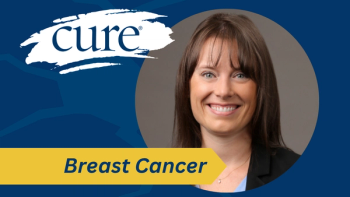
What is Palliative Care? Top 4 Questions Answered
Palliative care can make a huge difference for patients with cancer. Find out if it’s right for you.
As science progresses, patients with cancer are gaining access to more therapeutic approaches than ever before. But while options grow, so do the misconceptions that could lead them astray.
Here’s a common one: Palliative care is end-of-life care—it’s basically the same as hospice.
The bottom line? This statement just isn’t true. Palliative care and hospice “are quite different entities actually,” says Dr. Donald Sullivan. “I think (this misconception) impacts of lot of people’s desire to have palliative care involved in their treatment plans.”
Sullivan, a pulmonary and critical care researcher who serves as associate professor of medicine at Oregon Health and Science University and the VA Portland Healthcare System, defines palliative care simply: It’s an approach to patient care that focuses on maximizing patient quality of life.
1. What’s the Difference Between Palliative Care and Hospice?
The National Cancer Institute’s (NCI) definition is similar to Sullivan’s: Palliative care is “given to improve the quality of life of patients who have a serious or life-threatening disease. The goal…is to prevent or treat as early as possible the symptoms of a disease, side effects caused by treatment of a disease, and psychological, social and spiritual problems related to a disease or its treatment.” The practice is also commonly referred to as comfort care, supportive care and symptom management.
It’s important to note that palliative care can be given at any stage of an illness. This is one of the key concepts that separates palliative care from hospice, because hospice focuses on providing comfort to a patient when curative treatment is no longer possible, typically during their last six months of life. Here’s the NCI’s definition: Hospice is “a program that gives special care to people who are near the end of life and have stopped treatment to cure or control their disease.”
Like palliative care, hospice care offers physical, emotional, social and spiritual support for patients and their families. Its goal is also similar— “to control pain and other symptoms of illness so patients can be as comfortable and alert as possible.” Both types of care can be received on-site in a hospital or doctor’s office or in the comfort of your own home.
While patients in hospice care will receive treatments to address their symptoms, they do not receive any additional therapy aimed at curbing their underlying disease. On the other hand, you can receive palliative care as an add-on to existing treatments that still aim for a cure. For example, you can receive palliative care that eases the symptoms of your cancer and supports you emotionally, and at the same time continue to receive treatment aimed at getting you to a point where you have no evidence of disease. If all goes according to plan, patients who receive palliative care can and do “graduate” and continue living healthy lives. Hospice, on the other hand, typically ends concurrently with the life of the patient receiving it.
Palliative care physicians “try to improve symptom management. They get involved in a lot of the spiritual and supportive needs of patients and their families, and even do things related to advanced care planning,” Sullivan says. When necessary, palliative care physicians can make referrals to hospice, where palliative care can continue to be practiced, but in an end-of-life setting. “But this is just one component of palliative care. And most people focus on that, and I think that’s the main myth that persists today.”
2. Why Should I Choose Palliative Care?
When patients with cancer receive medicine or therapy, it is often prescribed to help them address their underlying disease. In the process of stopping or slowing the disease, however, nearly all of these treatments will have potential unwanted side effects (known in the medical community as “adverse effects” or “adverse events”) that can be uncomfortable, painful and even dangerous.
Chemotherapy, for example, is a commonly prescribed cancer treatment that uses drugs to address the underlying disease—cancer—to stop the growth of cancer cells, either by killing the cells or by stopping them from dividing. It can help kill a patient’s cancer cells, but in the process can leave patients with side effects and symptoms including easily upset stomachs, intense bouts of tiredness, and feelings of numbness. Side effects make it even more difficult to deal with the emotional, spiritual, financial and other pressures that inevitably come with a cancer diagnosis.
That’s why palliative care physicians aim to reduce those pressures and make life more comfortable for patients. As Sullivan said, it’s all about improving patients’ quality of life, which can be measured by the presence or absence of experiences like depression, pain, nausea and exhaustion.
3. Will Palliative Care Help Me Live Longer?
Many studies have shown that palliative care is effective in improving quality of life measures, including improvements in mood symptoms, reduction of depression, and improved coping mechanisms, according to Dr. Ryan Nipp, a gastrointestinal oncologist and cancer outcomes researcher at Massachusetts General Hospital Cancer Center and Harvard Medical School. But new research is finding that those benefits may extend beyond quality of life and affect so-called “quantity of life” too.“There have been a couple studies now, including Sullivan’s, that are showing that with earlier involvement of palliative care, you may also see a survival advantage,” Nipp says. In other words, yes, palliative care could help you live longer, but the science to support that statement is still in early days. Future studies are warranted to get a clearer picture of how it can impact survival rates for patients with cancer.
So far, the hypothesis that palliative care can improve survival is supported, as Nipp mentioned, by evidence gathered in Sullivan’s
That assertion is consistent with and supported by guidelines from the American Society of Clinical Oncology (ASCO), which recommend that palliative care be received within 8 weeks of a cancer diagnosis. Sinmilarly, a systematic
It’s important to note, however, that in Sullivan’s study in JAMA, the timing of palliative care post-diagnosis played a big role in determining whether a survival benefit was realized. For example, patients who received care 0 to 30 days after diagnosis in fact saw decreased survival, and patients who received it more than 365 days after diagnosis did not see any difference in survival compared with those who didn’t receive palliative care. It is not clear whether these results will be repeated in future studies or are simply inconsistencies that are reflections of the study’s shortcomings (for example, study participants were 98% men and 100% veterans, which could have skewed results).
While it is unclear exactly why palliative care has survival benefits that are correlated with the timing of its delivery, there are several hypotheses that attempt to explain this phenomenon—none of them proven. What matters more, Nipp said, is that we are seeing a benefit. Figuring out why we are seeing that benefit is less important.
“It’s about extending quality-of-life care throughout a patient’s entire illness trajectory so that you’re living as well as possible for as long as possible and getting the care that you want,” Nipp says. “If you’re seeing a survival benefit, that’s a great thing to see.”
4. Will My Insurance Cover Palliative Care?
Palliative care has obvious benefits, but care of all kinds can be expensive. A few frequently asked questions surrounding the financial realities of palliative care include: Will my insurance cover it? Does it make financial sense to receive it? Is it worth the time and money?
The short answer to all four of these questions is maybe.
For anyone with private health insurance (the kind you purchase or receive through your employer), the only way to know what healthcare services are covered by your insurance is to call your health plan and ask them directly. Many plans do provide coverage for palliative care, but some do not. Rather than risk getting blindsided by a big hospital bill on top of all your other challenges, spend a few minutes on the phone and get the facts you need to make an expedient decision.
For those on Medicare or Medicaid, hospice care should be covered in all cases. However, the breakdown for palliative care is as follows, according to
Medicare Part A: You may be able to receive palliative care in your community. Services could include nursing, social work and spiritual care visits.
Medicare Part B: This insurance may cover some services and supplies to treat your disease.
Medicaid: Coverage may include palliative care treatments and medications, including visits from doctors.
As you can see, coverage for palliative care depends on the type of insurance you have and even varies depending on where you live. Whether you have private and public insurance, it’s always safest to call ahead and find out what types of care are covered under your individual plan.
Palliative Care in a Nutshell
By now, it should be clear that palliative care and hospice are separate, but similar approaches to healthcare that serve the unique needs of different types of patients. Here’s an easy phrase to help you remember the difference:
Shedding misconceptions about palliative care can put you in a powerful position to best identify the treatment pathway that’s right for you — all while maintaining your dignity, alleviating pain, supporting your family and putting plans in place to make the best of your experience with cancer.
The decision to involve palliative care in your life “really depends on your individual needs,” Sullivan says. “It’s important to have a frank conversation with your oncology and palliative care team—it’s a group of people whose responsibility is to give you the best care possible, to give you the best quality of life they can.”





